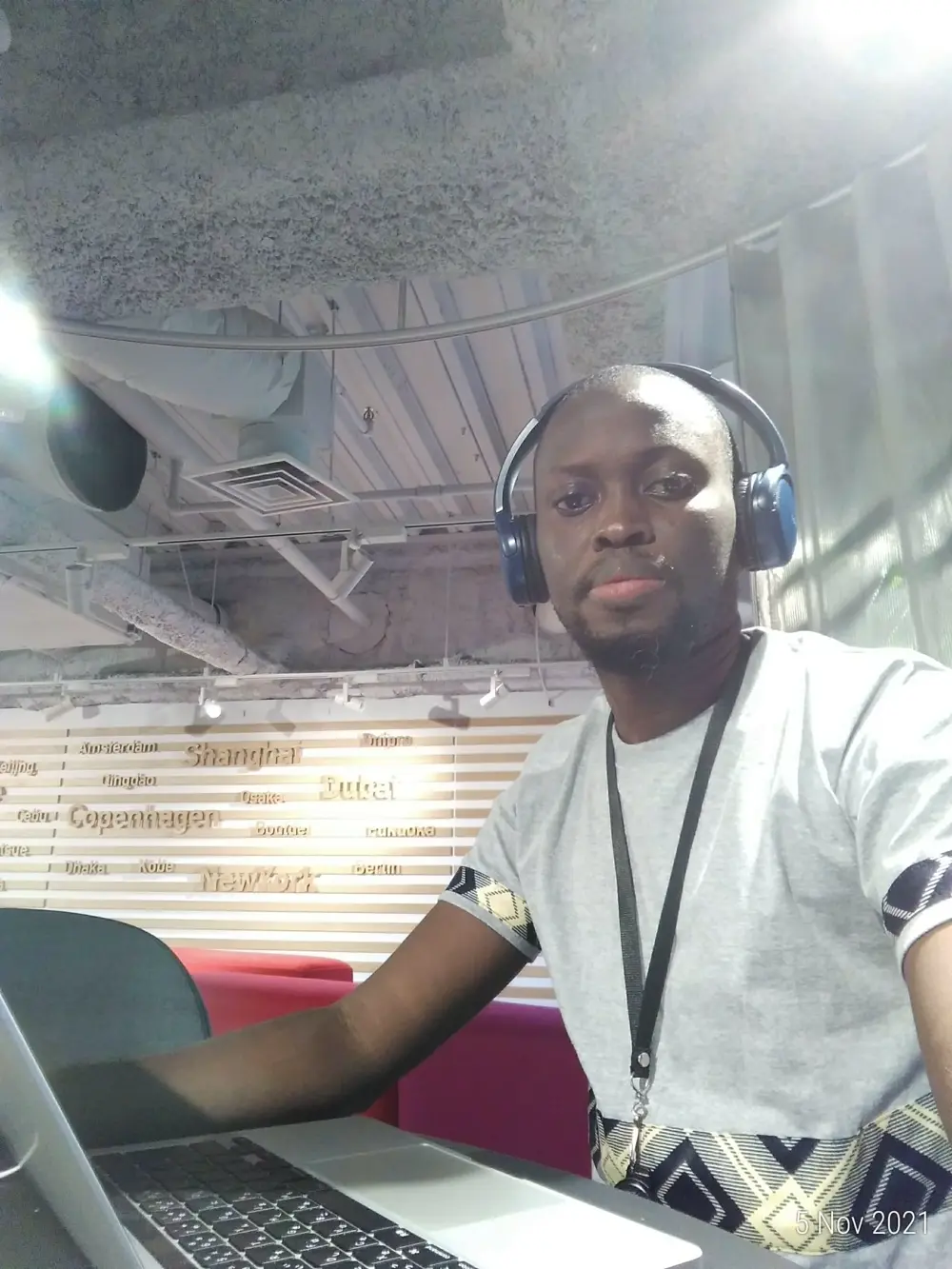If you want to implement a gesture that is not already provided by Apple you can customise your own. However, they recommend using the standard gestures because users are already familiar with them, so take some time to consider if a custom gesture is the right way to go. Custom gestures are usually more present in games so those might be a great place to add your creative gesture recognizers.
There are 2 types of custom gesture recognisers you can define yourself:
- Discrete - when your gesture involves a specific pattern of events. Examples: recognising a checkmark, a circle or a chevron (see example below). Those are easier to implement than the continuous ones because of the number of states they can have.
- Continuous - when your gesture does not follow a predefined pattern, when you want to gather user input and there are no failure cases. Example: recognising a user’s drawings on a screen. This usually requires a bit more effort to implement.
Discrete Gesture Recognizer example
For learning purposes we chose a simple example of recognising a right chevron and open the photo library. In real apps, you might want to look into other standard gestures for an accelerator for opening the photo library.
State machine
Before we get into it we should understand the state machine. This will be a recognizer for a discrete gesture (a specific pattern) so we will look into how we manage transitions for this case only. If you want to learn more about the state machine for continuous gestures you can check out Apple's documentation.
A gesture recognizer always starts in the possible state, that tells us that we are ready to process events. Based on the user's input we can end up in a failed (unsuccessful) state or ended (successful) state. You have to check if the user is following your pattern and at any deviation from that you should set the state to failed. If the user did indeed follow the expected pattern, UIKit will call the action method associated to the target object.
We also have the cancelled state that occurs when the current event is interrupted by a system event like receiving a phone call. You can also customise the cancel situations that can happen in your app. This is to make sure that we don't perform tasks that the user didn't intend.
It is also important to implement a reset() method that will make sure we are ready to process new event sequences by returning to starting values.
Custom gesture recognizer
The more conditions you have for a gesture to be successful the more precise it will be. For this example we expect that the user will use only one finger for the gesture, makes a down stroke from left to right followed by a down stroke from right to left. Those conditions are leaving open possibilities for edge cases but for the sake of this example we won't look too much into that.
What we have to do is first create the custom gesture recogniser and then add it to our view.
1. Making the custom gesture recognizer
Create a new swift file and import UIKit and UIKit.UIGestureRecognizerSubclass which is a header file that defines the methods and properties we must override to implement our custom gesture recognizer.
import UIKit
import UIKit.UIGestureRecognizerSubclass
In our case we will have to implement touchesBegin, touchesMoved, touchesEnded, touchesCancelled and reset.
To keep track of the phase of the chevron we can use an enum that we define before the custom gesture recogzizer class. In most cases you would also want to have a notStarted and initialPoint and then you can define the other phases based on your own gesture recognizer. For the chevron we will have a rightDownStroke and a leftDownStroke.
enum SymbolPhase {
case notStarted
case initialPoint
case rightDownStroke
case leftDownStroke
}
Then we start defining our class. We need to declare a strokePhase which has an initial state of notStarted, an initial touch point, which is zero for now and a trackedTouch of type UITouch. UITouch is an object that represents the location, size, movement and force of the touch occurring on the screen, and is an important part of our custom festure recognizers.
// Start of the class
class CustomGestureRecognizer : UIGestureRecognizer {
var strokePhase : SymbolPhase = .notStarted
var initialTouchPoint : CGPoint = CGPoint.zero
var trackedTouch : UITouch? = nil
//Continue below
The first function we override is the touchesBegan, here we check that we only start our gesture recognizer if there is only a finger on the screen. If there is, then we change the strokePhase to initialPoint and we save the location of the tracked touch into our initialTouchPoint.
override func touchesBegan(_ touches: Set<UITouch>, with event: UIEvent) {
super.touchesBegan(touches, with: event)
if touches.count != 1 {
self.state = .failed
}
// Capture the first touch and store some information about it.
if self.trackedTouch == nil {
self.trackedTouch = touches.first
self.strokePhase = .initialPoint
self.initialTouchPoint = (self.trackedTouch?.location(in: self.view))!
} else {
// Ignore all but the first touch.
for touch in touches {
if touch != self.trackedTouch {
self.ignore(touch, for: event)
}
}
}
}
//Continue below
Next we implement the touchesMoved which holds the main logic of our gesture tracking. We make sure we are only tracking the first touch and we save the new point and the previous point so we can compare them. We know that after the initialPoint state we should continue with a rightDownStroke, and after the rightDownStroke we should have a leftDownStroke. So we check in what state we are in and if the stroke followed the rules. If it did, we can continue to the next state. You can already see from the code that every time we have a deviation from the rules the state should be set to failed.
override func touchesMoved(_ touches: Set<UITouch>, with event: UIEvent) {
super.touchesMoved(touches, with: event)
let newTouch = touches.first
// There should be only the first touch.
guard newTouch == self.trackedTouch else {
self.state = .failed
return
}
let newPoint = (newTouch?.location(in: self.view))!
let previousPoint = (newTouch?.previousLocation(in: self.view))!
if self.strokePhase == .initialPoint {
// Make sure the initial movement is down and to the right.
if newPoint.x >= initialTouchPoint.x && newPoint.y >= initialTouchPoint.y {
self.strokePhase = .rightDownStroke
} else {
self.state = .failed
}
} else if self.strokePhase == .rightDownStroke {
// Make sure the initial movement is down and to the left.
if newPoint.y >= previousPoint.y {
if newPoint.x <= previousPoint.x {
self.strokePhase = .leftDownStroke
}
} else {
self.state = .failed
}
}
}
//Continue below
Then we implement what should happen when the touch ended. We verify that the last stroke phase was leftDownStroke and that the final points is below the initial point. If all is good, we set the state to recogznied, if not to failed.
override func touchesEnded(_ touches: Set<UITouch>, with event: UIEvent) {
super.touchesEnded(touches, with: event)
let newTouch = touches.first
// There should be only the first touch.
guard newTouch == self.trackedTouch else {
self.state = .failed
return
}
let newPoint = (newTouch?.location(in: self.view))!
// If the stroke was down up and the final point is
// below the initial point, the gesture succeeds.
if self.state == .possible &&
self.strokePhase == .leftDownStroke &&
newPoint.y > initialTouchPoint.y {
self.state = .recognized
} else {
self.state = .failed
}
}
//Continue below
Finally we implement the reset function which sets everything back to initial values so the app can be ready to recognize a new gesture. In the case of a cancelled touch, we reset the values and set the state to cancelled.
override func touchesCancelled(_ touches: Set<UITouch>, with event: UIEvent) {
super.touchesCancelled(touches, with: event)
self.state = .cancelled
reset()
}
override func reset() {
super.reset()
self.initialTouchPoint = CGPoint.zero
self.strokePhase = .notStarted
self.trackedTouch = nil
}
} //End of class
2. Add it to the view
view.addGestureRecognizer(CustomGestureRecognizer(target: self, action: #selector(openPhotoLibrary)))

Links/Resources
- Apple - Gesture Recognizer State Machine
- Apple - Implementing a Discrete Gesture Recognizer
- Apple - Implementing a Continuous Gesture Recognizer
- Apple - UITouch
If you are looking for more inspiration you might want to check out those other custom gesture recogniser tutorials:
- Checkmark tutorial from Apple
- Tickle tutorial from raywenderlich.com
- Circle tutorial from raywenderlich.com
Article Photo by Christin Hume



